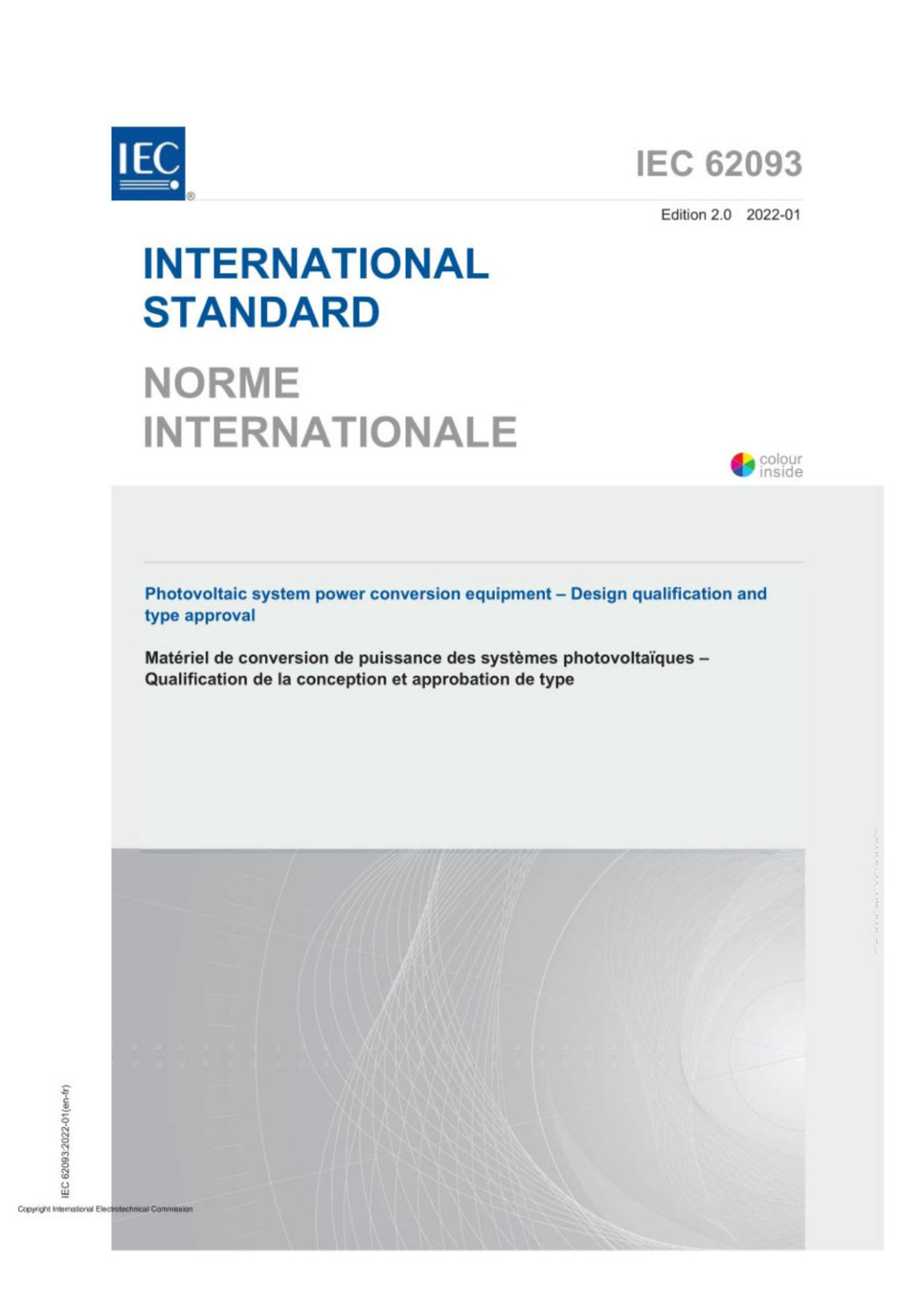

Most ebook files are in PDF format, so you can easily read them using various software such as Foxit Reader or directly on the Google Chrome browser.
Some ebook files are released by publishers in other formats such as .awz, .mobi, .epub, .fb2, etc. You may need to install specific software to read these formats on mobile/PC, such as Calibre.
Please read the tutorial at this link: https://ebookbell.com/faq
We offer FREE conversion to the popular formats you request; however, this may take some time. Therefore, right after payment, please email us, and we will try to provide the service as quickly as possible.
For some exceptional file formats or broken links (if any), please refrain from opening any disputes. Instead, email us first, and we will try to assist within a maximum of 6 hours.
EbookBell Team

4.3
38 reviewsPHOTOVOLTAIC SYSTEM POWER CONVERSION EQUIPMENT –
DESIGN QUALIFICATION AND TYPE APPROVAL
1 Scope
This document lays down IEC requirements for the design qualification of power conversion
equipment (PCE) suitable for long-term operation in terrestrial photovoltaic (PV) systems.
This document covers electronic power conversion equipment intended for use in terrestrial PV
applications. The term PCE refers to equipment and components for electronic power
conversion of electric power into another kind of electric power with respect to voltage, current,
and frequency. This document is suitable for PCE for use in both indoor and outdoor climates
as defined in IEC 60721 -3-3 and IEC 60721 -3-4. Such equipment may include, but is not limited
to, grid-tied and off-grid DC-to-AC PCEs, DC-to-DC converters, battery charger converters, and
battery charge controllers.
This document covers PCE that is connected to PV arrays that do not nominally exceed a
maximum circuit voltage of 1 500 V DC. The equipment may also be connected to systems not
exceeding 1 000 V AC at the AC mains circuits, non-main AC load circuits, and to other DC
source or load circuits such as batteries. If particular ancillary parts whereby manufacturers
and models are specified in the manual for use with the PCE, then those parts are tested with
the PCE.
Exceptions:
a) This document does not address characteristics of power sources other than PV systems,
such as wind turbines, fuel cells, rotating machine sources, etc.
b) This document does not address the characteristics of power electronic conversion
equipment fully integrated into photovoltaic modules. Separate standards exist or are in
development for those types of devices. It is, however, applicable to devices where the
manufacturer explicitly specifies the capability of full detachment from and subsequent
reattachment to the PV module or if the input and output terminals can be accessed and a
specification sheet for the PCE is available. Devices meeting these requirements may be
tested as individual samples independent from the PV module.
c) This document does not apply to power conversion equipment with integrated (built-in)
electrochemical energy storage (e.g. lead acid or lithium-ion). It is, however, applicable to
equipment where the manufacturer specifies and permits complete removal of the
electrochemical energy storage from the PCE so that stand-alone assessment of the PCE
with the storage removed becomes possible.
The object of the test sequences contained herein is to establish a basic level of durability and
to show, as far as it is possible within reasonable constraints of cost and time, that the PCE is
capable of maintaining its performance after prolonged exposure to the simulated environmental
stresses described herein that are based on the intended use conditions specified by the
manufacturer. Optional tests contained herein may be selected depending on the intended
installation, market, or special environmental conditions that the PCE is anticipated to
experience. The categorization imposes differentiated test sequences and test severity levels
reflecting the different requirements of mechanical and electrical components in different
environments.
PCEs are grouped into categories based on size and installation environment.
The actual life expectancy of components so qualified depends on their design, their
environment, and the conditions under which they are operated. Estimation of a lifetime and
wear out is not generally covered by this document